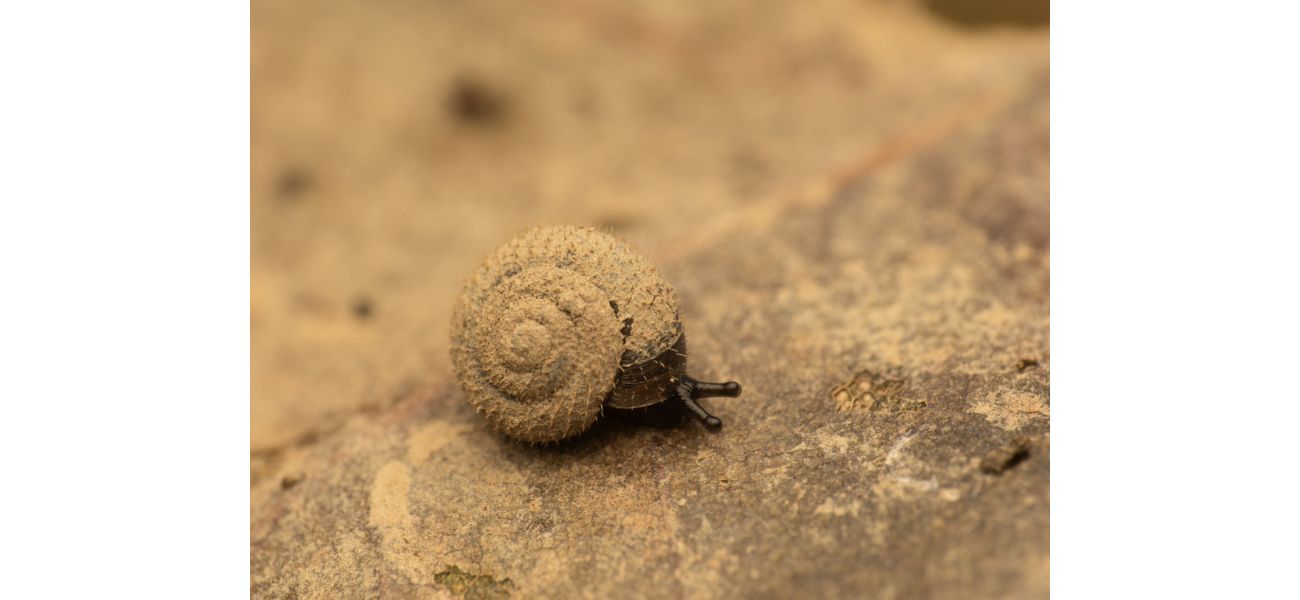Scientists working to protect unique fuzzy German snails - discover their motivation.
British fossils show that hairy snails have been in the country since prehistoric times, despite being first documented in 1982.
November 24th 2025.

Did you know that there's a rare snail species living along the riverside of the Thames in London? It's true! And conservationists are working hard to protect and save this special creature.
These snails, which are known for their tiny hairs on their shells that help them stick to surfaces, have become one of the UK's most endangered and unique molluscs. To better understand and protect them, a team led by Citizen Zoo and the Zoological Society of London has launched a project to survey the snails in different areas of London, including Newham, Richmond upon Thames, and Barnet.
These surveys are an important part of London's biodiversity plan, as these snails are listed as a priority species for conservation. It's amazing to think that these finger-sized creatures have been living in the UK for thousands of years, and were even around during the Stone Age and Ice Age when the British Isles were connected to mainland Europe.
Joe Pecorelli, a freshwater conservation programme manager at ZSL, shared his thoughts on the snails and their habitat: "This charming little snail has called our riverbanks and wetlands home for thousands of years – yet it is sadly now very rare in the UK, potentially restricted to just a few sites along the Thames. These surveys will help us understand how the snail is faring and how we can protect it – not only securing their future for years to come, but also helping safeguard green spaces throughout London for people and wildlife for future generations."
The team hopes that their research on the hairy snail will also benefit other species in the capital's waterways, such as water voles, dragonflies, and kingfishers. This snail is just one example of the amazing and diverse wildlife that can be found in Greater London.
Eliot Newton, the director of rewilding at Citizen Zoo, pointed out the importance of working together to protect these creatures: "It reminds us of the remarkable natural world that exists right on our doorstep. The surveys show how, by working together across the capital with many partners and empowering local communities, we can gain a deeper understanding of London's more hidden biodiversity and take steps to protect it."
But it's not just about protecting these snails – it's about appreciating and learning from the world around us. As Newton says, "The German hairy snail is a species that helps spark imagination and open people's minds to the curious and diverse wildlife that can thrive across Greater London."
And speaking of London, here are some interesting news stories from the city: luxury neighborhoods with million-pound homes, a missing capsule from the London Eye, and an increase in the congestion charge for drivers. Stay updated on all things London by adding Metro as your preferred source on Google.
These snails, which are known for their tiny hairs on their shells that help them stick to surfaces, have become one of the UK's most endangered and unique molluscs. To better understand and protect them, a team led by Citizen Zoo and the Zoological Society of London has launched a project to survey the snails in different areas of London, including Newham, Richmond upon Thames, and Barnet.
These surveys are an important part of London's biodiversity plan, as these snails are listed as a priority species for conservation. It's amazing to think that these finger-sized creatures have been living in the UK for thousands of years, and were even around during the Stone Age and Ice Age when the British Isles were connected to mainland Europe.
Joe Pecorelli, a freshwater conservation programme manager at ZSL, shared his thoughts on the snails and their habitat: "This charming little snail has called our riverbanks and wetlands home for thousands of years – yet it is sadly now very rare in the UK, potentially restricted to just a few sites along the Thames. These surveys will help us understand how the snail is faring and how we can protect it – not only securing their future for years to come, but also helping safeguard green spaces throughout London for people and wildlife for future generations."
The team hopes that their research on the hairy snail will also benefit other species in the capital's waterways, such as water voles, dragonflies, and kingfishers. This snail is just one example of the amazing and diverse wildlife that can be found in Greater London.
Eliot Newton, the director of rewilding at Citizen Zoo, pointed out the importance of working together to protect these creatures: "It reminds us of the remarkable natural world that exists right on our doorstep. The surveys show how, by working together across the capital with many partners and empowering local communities, we can gain a deeper understanding of London's more hidden biodiversity and take steps to protect it."
But it's not just about protecting these snails – it's about appreciating and learning from the world around us. As Newton says, "The German hairy snail is a species that helps spark imagination and open people's minds to the curious and diverse wildlife that can thrive across Greater London."
And speaking of London, here are some interesting news stories from the city: luxury neighborhoods with million-pound homes, a missing capsule from the London Eye, and an increase in the congestion charge for drivers. Stay updated on all things London by adding Metro as your preferred source on Google.
[This article has been trending online recently and has been generated with AI. Your feed is customized.]
[Generative AI is experimental.]
0
0
Submit Comment





